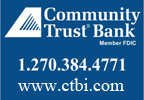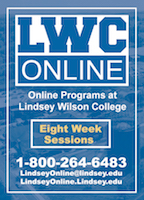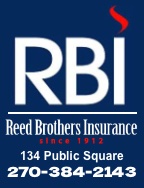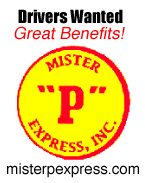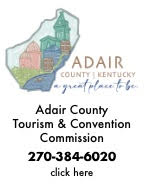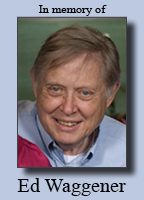| ||||||||||
Dr. Ronald P. Rogers CHIROPRACTOR Support for your body's natural healing capabilities 270-384-5554 Click here for details 


Columbia Gas Dept. GAS LEAK or GAS SMELL Contact Numbers 24 hrs/ 365 days 270-384-2006 or 9-1-1 Call before you dig Visit ColumbiaMagazine's Directory of Churches Addresses, times, phone numbers and more for churches in Adair County Find Great Stuff in ColumbiaMagazine's Classified Ads Antiques, Help Wanted, Autos, Real Estate, Legal Notices, More... 
|
Tom Chaney No. 252: The Art of Ken Follett Of Writers and Their Books, No. 252: 2 May 2010, essay The Art of Ken Follett The next earlier Tom Chaney column, a book review of Generations by John Edgerton By Tom Chaney Email: Tom Chaney bookstore@scrtc.com The Art of Ken Follett I keep being impressed with the works of writer Ken Follett. Beginning with his 1978 novel, Eye of the Needle and continuing down to the present, Follett has been a pleasure to read and re-read. I have to confess to the delights of re-reading most of what he has written even when I know the intricacies of plot ahead of time. In the last few weeks, I have gone back to The Eye of the Needle, The Hammer of Eden 1998, and Jackdaws 2001. I have read Code to Zero 2000, for the first time. Follett has a quite fine site on the internet wherein he describes his process of work on telling a story. I say telling a story rather than 'writing a novel' for he has produced a couple of non-fiction tales along the way which, though factually true, have the ring of the higher truth of fiction. I especially admire his On the Wings of Eagles wherein he recounts the actual rescue of four white collar employees of Ross Perot who had been arrested in Tehran and could not escape. But his description of the process of telling the story is relevant in either case. The Eye of the Needle and Jackdaws are both spy stories set during World War II. Both involve the deception the allied forces used to keep the landing site on D-Day secret from Germany. The former involves the tale of a German spy embedded in England who must escape to Germany to bear film of the fake armies erected in Britain and how his escape is thwarted by a legless man raising sheep on an island near Scotland. Jackdaws is a tale of British spies -- a dirty, distaff, half dozen -- infiltrated into France to sabotage the communication network of the Germans just prior to the invasion. In Code to Zero it is 1958. A Russian spy in the C.I.A. causes a scientist working on America's first space satellite to develop a permanent loss of memory. He is forced to rediscover his life by deduction in time to save the satellite Explorer from following the fate of Vanguard which had blown up on the launch pad. The Hammer of Eden involves a series of man-made earthquakes using a piece of oil drilling machinery to literally "hammer" the earth. A mob related fugitive, long off the radar of law enforcement has joined a hippy cult raising grapes and making wine on public land in California. When the governor announces a dam proposal that would flood their operation, the cult leader makes good on his threat to cause an earthquake. Not believed at first, his man-made quakes become increasingly more serious. One important thread which runs through all Follett's works is their believability in the face of incredulity. On his web site, Follett gives some hints at the craftsmanship which makes this possible. He describes the process beginning with the idea. The reader encounters the end result of that process. One of the first things that strikes me as I read and re-read Follett is the economy of his language. Neither a word nor a sentence is wasted in any paragraph. The building blocks of language are trimmed and fitted into the seamless whole of the entire piece. Apparent digressions are merely necessary alternate routes in a well-planned journey. The beauty of this process is that the mechanics of the plan are not self evident until the whole is revealed. Follett is also a master of suspense -- believable suspense. He is able to pile complication upon complication which readers seem to relish. As Die Nadel, the villain in The Eye of the Needle, moves toward his final rendezvous he pirouettes like the best ballet dancer or broken field runner. And I could wax eloquent on Follett's detail in his historical novel on the building of a cathedral in The Pillars of the Earth. It is the depth of his research which leads by nature into his economical descriptions. If you don't know Follett, I promise you a great adventure. Tom Chaney can be found telling stories, planning his next meal, and occasionally selling books at THE BOOKSTOREKen Follett: Master Storyteller and Best-Selling Author Think you found something incorrect in a Follett novel? He has a page about this:Oops! Errors, omissions and loose ends ... This story was posted on 2010-05-02 04:40:44
Printable: this page is now automatically formatted for printing.
Have comments or corrections for this story? Use our contact form and let us know. More articles from topic Tom Chaney: Of Writers and Their Books:
Tom Chaney No. 251: a review of Generations Tom Chaney No. 250: And Finally, Spring Tom Chaney No. 249, 11 April 2010: Ralph McInerny Tom Chaney No. 248, 4 April 2010: Out in the Country Tom Chaney No. 247, 28 March 2010: Billboard dreaming Tom Chaney No. 246, 21 March 2010: Down these mean streets... Tom Chaney No. 245, 14 March 2010: Fragments of deceit Tom Chaney, 7 March 2010: Five Years and going around again Tom Chaney No. 243: Even If It's Broken, Don't Fix It Tom Chaney No. 242: Backing Into Spring View even more articles in topic Tom Chaney: Of Writers and Their Books |
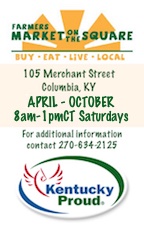


|
||||||||
|
| ||||||||||
|
Quick Links to Popular Features
Looking for a story or picture? Try our Photo Archive or our Stories Archive for all the information that's appeared on ColumbiaMagazine.com. | ||||||||||
|
Contact us: Columbia Magazine and columbiamagazine.com are published by Linda Waggener and Pen Waggener, PO Box 906, Columbia, KY 42728. Please use our contact page, or send questions about technical issues with this site to webmaster@columbiamagazine.com. All logos and trademarks used on this site are property of their respective owners. All comments remain the property and responsibility of their posters, all articles and photos remain the property of their creators, and all the rest is copyright 1995-Present by Columbia Magazine. Privacy policy: use of this site requires no sharing of information. Voluntarily shared information may be published and made available to the public on this site and/or stored electronically. Anonymous submissions will be subject to additional verification. Cookies are not required to use our site. However, if you have cookies enabled in your web browser, some of our advertisers may use cookies for interest-based advertising across multiple domains. For more information about third-party advertising, visit the NAI web privacy site.
| ||||||||||
















